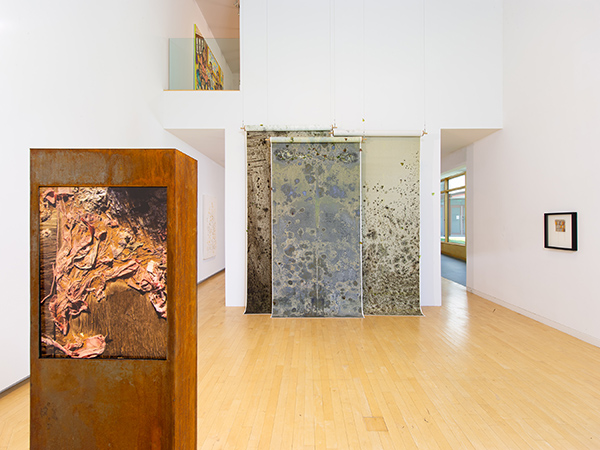52 Artists: A Feminist Milestone
The Aldrich Contemporary Art Museum • Ridgefield, CT • thealdrich.org • Through January 8, 2023

Strong research, diverse artistic practices, and animated feminist inquiry bridge two group exhibitions that were curated 51 years apart at The Aldrich—the historic Twenty Six Contemporary Women Artists, organized by pioneering curator, activist, and writer Lucy Lippard in 1971; and 52 Artists: A Feminist Milestone, an intergenerational homage and contemporary extension of Lippard’s show that adds 26 artists who are born after 1980, identify as female or nonbinary, and are influenced by feminist art practices. Curated by Alexandra Schwartz and Amy Smith-Stewart, 52 Artists presents works by all but three of the participants from the 1971 show alongside new artists whose inclusion “underscore[s] the original exhibition’s enduring legacy.” In 52 Artists, each gallery is a heartfelt homage to second-generation feminist artists—whose works appear shoulder-to-shoulder with their younger peers—and a bellwether for understanding contemporary ideas around gender identity and intersectional feminism.
Since some of the works from Twenty Six Contemporary Women Artists could not be located or were made using ephemeral materials, 52 Artists includes a mix—works from the original show, commissioned recreations, photo documentation, and representative pieces made by those artists in the late 1960s/early 1970s. Importantly, the exhibition often includes more recent works by these artists, showing how their art has changed over the years. The new generation of exhibiting artists has an equally diverse range of approaches and materials, yet are more international and more diverse in terms of race, sexual orientation, and gender identity. While the works from Twenty Six Contemporary Women Artists barely tackled political topics, the art by these younger artists frequently addresses politically charged themes, exploring Black queerness, transgender imagination, ableism, the Asian Diaspora, immigrant identities, cultural appropriation, and more.
In the galleries, the curators draw connections within and across generations using subject matter (the figure, the environment, marriage), materials (earth art, textiles, soft sculpture, assemblage), and tone (dystopic, celebratory, indexical). Their attention to the visitor’s phenomenological experience—the body moving from artwork to artwork and room to room—make 52 Artists as viscerally and visually engaging as it is rigorous and historically important. It is—to quote a phrase from Grace Glueck’s 1971 review of Twenty Six Contemporary Women Artists—“well worth the trip to Ridgefield.”
—Terri C Smith
